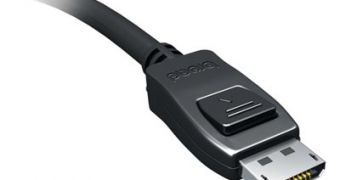Video Electronics Standards Association (VESA) has just announced a new version of its Embedded DisplayPort Standard, also known as eDP, which promises to replace the old LVDS interface used in most notebooks, tablets, and AIO PCs with a more power efficient technology.
The increased power efficiency is achieved through the inclusion of a new technology called Panel Self-Refresh (PSR) which allows for the GPU to enter a power-saving state in between frame updates by including framebuffer memory in the display controller.
This adds to a series of other technologies enclosed in the eDP standard which are destined to improve the battery life of portable systems, such as seamless refresh rate switching.
VESA's announcement regarding the introduction of eDP v1.3 comes shortly after Intel and AMD have announced that they plan to drop LVDS support from their chips by 2013.
Other PC manufacturers like Dell, Lenovo, Samsung and LG Display also have similar plans to phase out LVDS in the coming years.
Right now, LVDS is the most widely used interface for connecting embedded displays to the graphics cards found inside devices like notebooks or tablets.
“As OEMs prepare to retire legacy technologies, such as LVDS, eDP offers a feature-rich replacement that is cost effective and ready for high volume implementation,” says Brian O’Rourke, principal analyst, In-Stat.
“This, combined with the growing demand for high performance mobile devices, suggests eDP will continue to gain traction among PC OEMs,” concluded Mr. O’Rourke.
According to VESA, portable PC devices utilizing the new eDP v1.3 PSR-enabled interface are expected to become available for purchase as early as 2012.
Meanwhile, the eDP 1.2 standard will start to appear in various devices this year and offers stereo 3D capabilities, higher resolution support as well as multi-monitor support via a single link.

 14 DAY TRIAL //
14 DAY TRIAL //